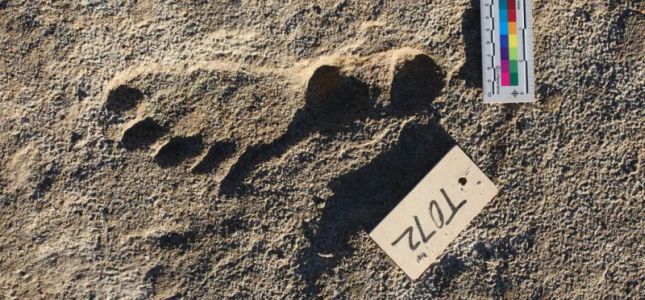
Ancient human footprints from White Sands. Photo: national Parks Service
Like millions of other children, I was taught that Christopher Columbus discovered America in 1492. Then when I was seven years old, the site of the Norse settlement at L’Anse aux Meadows, Newfoundland was discovered and I learned that Columbus was not only not the first, or even the first European, to discover the Americas.
All of this raises the question of the meaning of “discovery.” The two American continents had been populated for thousands of years when the Norse and Columbus stepped ashore for the first time. Who were the first humans to “discover” America? When did they arrive and by what means? The answers are still emerging, but they appear to have been sailors who arrived by boat.
For the second half of the 20th century, the predominant hypothesis among archaeologists was that the first humans arrived in North America from Asia around 13,000 years ago by crossing the Bering land bridge. This became known as the “Clovis first theory” named after the town in New Mexico where the first distinctive spear points of the ancient culture were discovered.
In recent years, however, evidence of much earlier migrations has been uncovered in Brazil, Mexico, South Carolina, and Oregon. Most recently, ancient human footprints found in White Sands, New Mexico, have been dated to over 20,000 years old.
Researchers from the University of Oxford have published a study suggesting that the earliest Americans arrived in the New World 30,000 years ago.
How did these early migrants get to America? They couldn’t have walked across the land bridge as it was covered by ice. The evidence suggests that they came by boat.
Oxford’s Professor Tom Higham, Director of the Oxford Radiocarbon Accelerator Unit, School of Archaeology, says ‘The people that traveled into these new lands must have come by boat because the northern parts of North America were impenetrable and sealed off from eastern Eurasia by a massive ice sheet until 13,000 years ago.’
And so, to return to the original questions — Who were the first humans to “discover” America? When did they arrive and by what means? Archeologists are still working to develop better answers, but it seems evident that whoever the first peoples were, they arrived much longer ago than previously estimated and they were sailors traveling by boat.

Is it so hard to call those human beings Native Americans rather than Ancient humans? Natives have been fighting to be recognized as original people who inhabited turtle island and everyone since 1492 have done their best to erase that fact. It’s now time to embrace the fact that Natives where here and they where human beings.
Not an expert so I’m going to have a guess at this. Calling people Native Americans attributes to them levels of culture that the ancient humans probably did not share and that constitute grounds for the distinction.